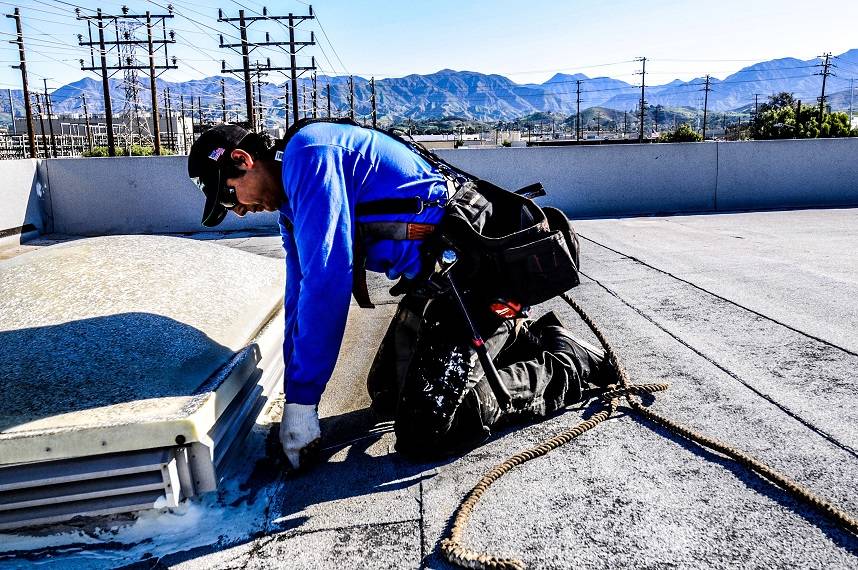At Central Roofing Company, we understand that a sturdy and reliable roof is crucial for the success and safety of your commercial property. Our team of highly skilled and trained roofing professionals is committed to delivering exceptional craftsmanship and superior service in every project we undertake.
8 Built-Up Roofing Must Know Pros & Cons
At Central Roofing we come across all types of commercial roofing systems and one of the most popular systems is Built-Up Roofing. Built-Up Roofing (BUR), also known as tar and gravel roofing, has been a popular choice for flat roofs for over a century. BUR consists of multiple layers of asphalt and felt that are built up to create a durable and waterproof membrane. While this type of roofing system has many benefits, it also has some drawbacks that should be considered before making a final decision. In this article, we will explore the eight pros and cons of Built-Up Roofing to help you determine if it is the right choice for your building.
Built-Up Roofing (BUR)
BUR roofing has been used for decades and is still a common flat roofing system in Los Angeles. It is made of multiple layers of asphalt and felt or fiberglass matting and is topped with gravel or stone. BUR roofing is durable and long-lasting but can be heavy and difficult to install.
Pros:
1 . Durability: BUR roofing is highly durable and can withstand various weather conditions, including extreme heat, cold, and heavy rain. It is also resistant to UV rays, which helps to prevent cracking and fading.
2. Low cost: BUR roofing is relatively inexpensive compared to other flat roofing systems, making it a popular option for commercial and industrial buildings.
3. Easy to repair: BUR roofing is easy to repair, and damage can be easily patched by adding additional layers of felt and asphalt.
4. Fire-resistant: BUR roofing is fire-resistant, which can provide added safety for commercial and industrial buildings.
Cons:
1. Heavyweight: BUR roofing is relatively heavy compared to other flat roofing systems, which may require additional support structures to be installed.
2. Shorter lifespan: BUR roofing has a shorter lifespan compared to other roofing options, such as PVC or TPO. It typically lasts between 10-20 years, depending on various factors such as weather conditions and maintenance.
3. Odor and fumes: BUR roofing can emit strong odors and fumes during installation, which may require additional ventilation.
4. Environmental concerns: BUR roofing is made from petroleum-based materials and may not be suitable for those looking for more sustainable roofing options.
Conclusion
After examining the eight pros and cons of Built-Up Roofing, it is clear that this roofing system has its advantages and disadvantages. On one hand, BUR is a durable and long-lasting roofing option that can provide excellent waterproofing capabilities. On the other hand, it is a relatively expensive roofing option that can be difficult to install and maintain. Ultimately, the decision to choose BUR as your roofing system will depend on your specific needs and preferences. It is important to carefully consider all of the factors and consult with a professional roofing contractor to make an informed decision. With the right installation and maintenance, Built-Up Roofing can provide a reliable and effective roofing solution for your building.
Let’s Fix Your Roof Right — Get a Free Estimate Today
Serving Los Angeles & Orange County for 30+ years.
Trusted. Local. Professional.
Central Roofing Company Headquarters
555 W. 182nd Street
Gardena, CA 90248
📞 310-527-6770

Get A Quote
One of our roofing estimators will gladly meet you to discuss your options and follow up with a free, no-obligation, written estimate.
555 W. 182nd St. Gardena, CA 90248
Ph: 310-527-6770
Our Office Locations:
Our Services
CA license #684960 – Central Roofing, 2025 ©All Rights Reserved | Terms of Use | Privacy Policy | Built by Dymic